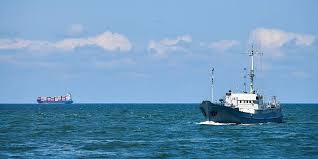- Courses
- GS Full Course 1 Year
- GS Full Course 2 Year
- GS Full Course 3 Year
- GS Full Course Till Selection
- Answer Alpha: Mains 2025 Mentorship
- MEP (Mains Enrichment Programme) Data, Facts
- Essay Target – 150+ Marks
- Online Program
- GS Recorded Course
- Polity
- Geography
- Economy
- Ancient, Medieval and Art & Culture AMAC
- Modern India, Post Independence & World History
- Environment
- Governance
- Science & Technology
- International Relations and Internal Security
- Disaster Management
- Ethics
- NCERT Current Affairs
- Indian Society and Social Issue
- NCERT- Science and Technology
- NCERT - Geography
- NCERT - Ancient History
- NCERT- World History
- NCERT Modern History
- CSAT
- 5 LAYERED ARJUNA Mentorship
- Public Administration Optional
- ABOUT US
- OUR TOPPERS
- TEST SERIES
- FREE STUDY MATERIAL
- VIDEOS
- CONTACT US
Project SeaCURE: A New Frontier in Ocean-Based Carbon Capture
Project SeaCURE: A New Frontier in Ocean-Based Carbon Capture
23-04-2025

- The ocean acts as a major natural carbon sink, absorbing a significant portion of CO₂ emissions from human activities.
- Project SeaCURE, based on England’s south coast, aims to enhance this natural process through active intervention.
- It seeks to transform the ocean from a passive absorber into a proactive tool for addressing climate change.
What is Project SeaCURE?
- Location: The project is based in Weymouth, England.
- Objective: To explore whether extracting CO₂ from seawater is a scalable and cost-effective method to reduce atmospheric carbon.
- It targets CO₂ already dissolved in seawater, which is far more concentrated than in the atmosphere.
- The approach focuses on returning treated, carbon-depleted water back to the ocean to absorb more atmospheric CO₂.
How the Technology Works
- Seawater is pumped into a treatment facility from the English Channel.
- The water is made more acidic, triggering the release of dissolved carbon dioxide (CO₂) as gas.
- The released CO₂ is captured before it can escape into the air.
- The captured CO₂ can potentially be purified using activated carbon during post-processing to remove impurities.
- The treated seawater is neutralised and returned to the ocean, enabling it to absorb more atmospheric CO₂.
Current Impact
- The pilot project currently removes a modest amount of carbon dioxide (CO₂) annually, demonstrating the feasibility of the concept.
- SeaCURE’s model shows potential for scaling up CO₂ removal using renewable energy sources, such as floating solar panels.
Challenges and Environmental Concerns
- The process requires significant energy to create the required chemical conditions.
- If powered by non-renewable energy sources, the process may reduce or negate its environmental benefits.
- There is a risk of disrupting the ocean’s natural carbon balance.
- Marine organisms, such as phytoplankton and shell-forming species (e.g., corals, mussels), may be affected by changes in available CO₂ and pH (potential of Hydrogen).
- Activated carbon, although not used directly in the extraction process, may be applied in water treatment to meet environmental discharge standards.
Context: Ocean Acidification
- Oceans are becoming more acidic due to carbon dioxide (CO₂) absorption, a trend known as ocean acidification.
- Even slight shifts in pH (potential of Hydrogen) can have serious impacts on marine life, especially shell-forming organisms such as corals, mussels, and some types of plankton.
- SeaCURE places a strong emphasis on balancing CO₂ removal with the need to preserve ocean chemistry and ecological health.
Broader Relevance and Future Potential
- SeaCURE is one of several early-stage projects testing new carbon dioxide removal (CDR) methods.
- Experts view such innovations as essential for achieving global net-zero climate goals, where the amount of greenhouse gases emitted is balanced by the amount removed from the atmosphere.
- Activated carbon plays a supporting role in other carbon dioxide removal (CDR) technologies, such as air purification and Bioenergy with Carbon Capture and Storage (BECCS), demonstrating its versatility.
- If successful, SeaCURE could become a model for sustainable, ocean-based carbon capture strategies.
- Projects like SeaCURE signify a shift from passive carbon absorption to active climate action using marine systems as a proactive tool in climate mitigation.




